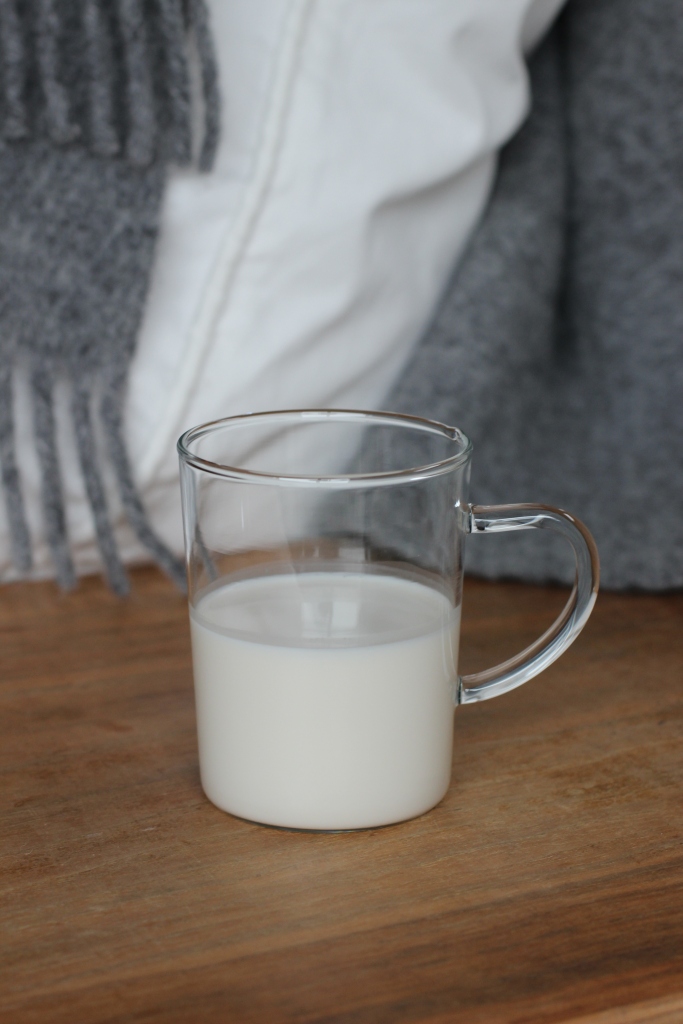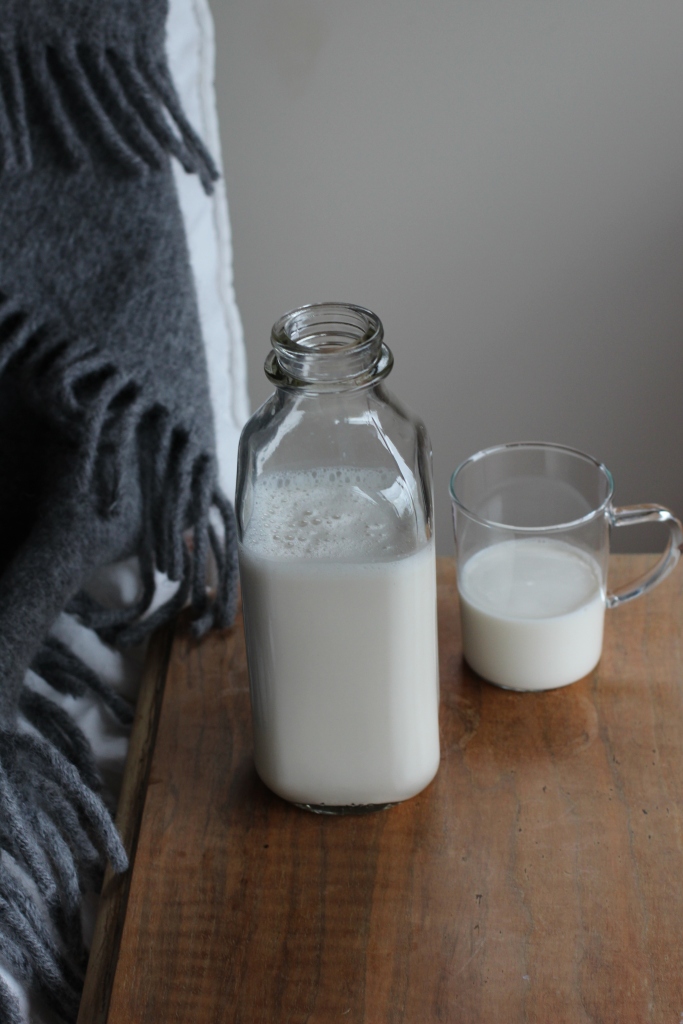 What exactly are we eating and drinking? Have you asked this question lately? If you have, you’re not alone. More and more of us are becoming increasingly interested in grocery-store-bought food: What’s in it and how did it come to be? Finally we want to know how the food industry is growing, making, handling, preparing, packaging, and distributing the food we put into our bodies.
What exactly are we eating and drinking? Have you asked this question lately? If you have, you’re not alone. More and more of us are becoming increasingly interested in grocery-store-bought food: What’s in it and how did it come to be? Finally we want to know how the food industry is growing, making, handling, preparing, packaging, and distributing the food we put into our bodies.
Dairy milk is not off the table from such scrutinization. This is reflected in the rising sales of dairy alternatives. Do you remember when the only milk substitutes in grocery stores were made from soy and rice? Lining the shelves today are several different brands of almond, coconut, hemp, oat, even quinoa milks. According to Mintel GNPD (2011), the number of new rice/nut/grain and seed based drinks more than doubled from the 18 introduced in 2006 to 45 introduced in 2011 (Source). And in the United States in 2012, sales of milk alternatives rose 15.8%, while whole and skim milk sales fell 2.4% and 3.5% respectively.
Why are consumers making the switch? There are several reasons, from obvious medical motivations to health concerns and very personal-based ideologies. Let’s look at some possible reasons:
1. Some of us give up milk because of digestive issues, like lactose intolerance and casein allergy. Others abandon it because of self-diagnosed milk “sensitivity” that may exacerbate pre-existing conditions like eczema, IBS, headaches, bloating, acne, and arthritis.
2. Health-conscious consumers are questioning the benefits of dairy to their health, and this goes beyond the saturated fat content in milk. In the United States, people are becoming increasingly aware of the growth hormone given to female cows to increase milk production called recombinant bovine somatotropin (rBST), also known as recombinant bovine growth hormone (rBGh). In an article in the 2013 summer issue of Veg News entitled “Is Dairy Dead?” Kristie Middleton, farm protection manager at the Humane Society in the U.S., writes “Besides side effects such as inflamed udders, rashes, and an increased risk of lameness…heifers treated with rBST have increased levels of the hormone IGF-1, which is potentially connected with tumor growth in humans.” The European Union, Australia, New Zealand, and Canada have banned the use of rBST.
Note to Canadians: Although American milk can’t legally be sold in Canada (some experts believe it is sold regardless of regulations. See here for evidence of that), many American dairy products (including those from cows treated with rBST) do have access to Canadian markets as dehydrated ingredients. These ingredients appear on food labels under such terms as milk ingredients, concentrated skim milk, whey protein concentrate, and whey protein isolate. Such ingredients are commonly found in processed foods, dairy based desserts (ice cream, cheesecakes, mousse puddings), cottage cheese, yogurt, cream cheese, sour cream, cheese products and sauces, salad dressings, cooking sauces, and whey protein.
3. Consumers are becoming increasingly interested in industrial factory-farming practices and in the welfare and well-being of farm animals. Many of us have seen Food, Inc., a documentary film and a sad portrayal of the inhumane treatment of food animals in unbearable cramped quarters and deplorable conditions of some industrial-sized warehouses in the U.S. Such animals never see daylight or a blade of grass. Of course the mistreatment of animals extends to other countries besides America, like Canada.
In an article entitled “Facts About Our Food,” the Canadian Coalition for Farm Animals (CCFA) reports: “While the number of Canadian dairy farms has decreased by 85% from 1970 to 2003, the volume of milk per farm has increased by an astounding 550% in that same period. Dairy cows have paid the price for such staggering growth.” According to the CCFA, dairy cows are bred to be high producing animals by birthing a calf annually. (Following the birth, the calf – as young as a few hours old – is removed from its lactating mother so her milk can be used by humans. This premature separation causes distress to both cow and calf). Annual breeding of dairy cows, intensive milking of the animals, large udders, and confinement (dairy cows are typically tied to individual pens where they’re unable to move freely enough to even groom themselves) can cause a host of physical ailments, including swollen udders with mastitis, a common and painful bacterial infection. Also, the type of high-energy feed given to dairy cows to increase their milk production can result in metabolic disorders that can cause lameness, even death. In their article CCFA describes “downer” cattle as cows that are unable to walk or stand. They write: “(Dairy cows) arrive at the slaughterhouse unable to leave the transport truck, usually due to injury or illness sustained on a dairy farm. (They) are sometimes dragged from the truck by tractors or loaders, and are either left to die, or are slaughtered with the other animals. This results in immense suffering and pain for a downed animal.”
See here for the entire article and here for No Country for Animals, a documentary film that examines Canada’s deplorable record on animal welfare and looks at the people who are fighting to bring about much-needed change.
What’s happening in your country with animal rights?
Calcium in Dairy Milk and Whole Foods
Milk and milk products have long been marketed by the dairy industry as rich sources of calcium. And they are. So if you’re allergic to milk, have health concerns or ethical issues surrounding the production of milk, or just feel better without it, you may worry about getting enough calcium. In her book The Whole Food Guide to Strong Bones: A Holistic Approach, Dr. Annemarie Colbin writes “Don’t worry; there are plenty of other sources of calcium that may actually be easier for your body to absorb.”
According to Colbin, plant foods contain plenty of calcium that is highly bioavailable (almost twice as much ounce for ounce as in milk products and even calcium-fortified food and beverages). The best vegetable sources include cauliflower, watercress, parsley, Brussels sprouts, rutabaga, kale, mustard greens, bok choy, broccoli, and turnip greens. Other good sources are seaweeds, nori, miso, and mineral waters. Animal foods rich in the mineral include oysters, soft-shell crabs, small fish with bones (sardines and anchovies), and soup stocks made with bones.
Although slightly less bioavailable, calcium is also abundant in sweet potatoes, pinto beans, sesame seeds, and almonds. Almond Milk
Almond Milk
1 cup whole raw organic almonds, soaked overnight
4 cups filtered water
2 soft dates, pitted
1/2 – 1 whole vanilla bean, opened and scraped clean

 Drain and thoroughly rinse the soaked almonds. Add them to a high speed blender with 4 cups filtered water, pitted dates, and flesh of vanilla bean. Blend on high until ingredients are liquified. Strain through a sieve, cheesecloth, or fine-mesh produce bag into a large measuring bowl or saucepan. Pour into a glass jar and store in the fridge tightly sealed for up to three days.
Drain and thoroughly rinse the soaked almonds. Add them to a high speed blender with 4 cups filtered water, pitted dates, and flesh of vanilla bean. Blend on high until ingredients are liquified. Strain through a sieve, cheesecloth, or fine-mesh produce bag into a large measuring bowl or saucepan. Pour into a glass jar and store in the fridge tightly sealed for up to three days. Soaking: To increase the bioavailability of almonds it’s important that we soak them. Soaking reduces the phytic acid in these nuts (which binds to zinc, iron, and calcium, making these minerals less available to the body) and increases their digestibility.
Soaking: To increase the bioavailability of almonds it’s important that we soak them. Soaking reduces the phytic acid in these nuts (which binds to zinc, iron, and calcium, making these minerals less available to the body) and increases their digestibility.
Nutrient Profile: 1 cup of almonds contains 352 mg calcium, 1,576 mcg copper, 6.1 mg iron, 390 mg magnesium, 673 mg phosphorous, and 1,034 mg potassium. Almonds are also a very good source of vitamin E, with one cup containing 32 mg.
Storage: Make sure to store almonds in a tightly-sealed container in the fridge to reduce the chances of rancidity. Refrigerated almonds will keep for six months. Almonds kept in the freezer last for a year.
Biochemical Considerations: Almonds are a concentrated source of oxalates, which may be of concern to individuals who produce kidney stones or gallstones. Check with your doctor. Don’t drink almond milk if you have a nut allergy.
Be sure to make your own nut milk as most store-bought milk alternatives contain carrageenan, a thickening agent, that has been linked to inflammation and has been shown to induce inflammatory bowel disease in animal models. (Source).
Wow, some processed foods and beverages are looking unhealthy, aren’t they?
The good news is that we don’t have to wait for the food industry to get it together. We can take matters into our own hands and make a lot of what we need in our humble kitchens, even milk.
I’m so ready to be the change that needs to happen. Are you?
In Health,
Zuzu

October 2, 2013 at 10:03 am
Dear Zuzu, Another wonderful post…I love them all. Your food photos are truly exquisite. In case you haven’t considered it, take a look at http://www.pinkladyfoodphotographeroftheyear.com/2014/step-up-to-the-plate-for-pink-lady-food-photographer-of-the-year-2014/, call for food photography. There’s an annual competition plus other calls as well. There seem to be other food photography competitions online as well. Best, Susan
October 2, 2013 at 2:01 pm
Thanks Susan for the vote of confidence! I’ll for sure check out the competitions on line.
October 2, 2013 at 10:22 am
Nice one!
Sent from my iPhone
October 2, 2013 at 2:54 pm
Thanks Sam!